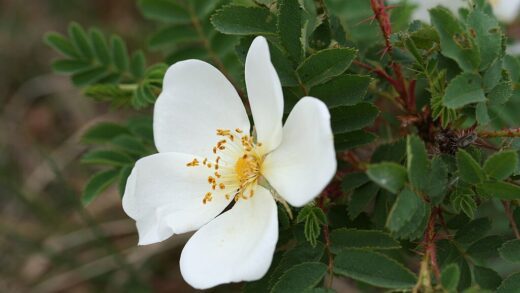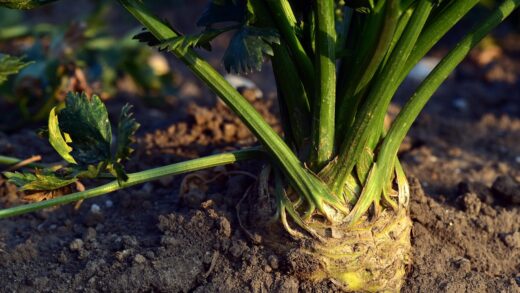As the vibrant display of the summer garden begins to fade and the threat of the first frost approaches, the dahlia grower’s attention must turn to the crucial task of overwintering. Dahlias, with their fleshy tubers native to the frost-free climates of Mexico, cannot survive the freezing temperatures of a temperate winter if left in the ground. The process of lifting, preparing, and storing these tubers is a vital annual ritual that preserves your precious collection, ensuring that the same beloved varieties can be replanted to grace your garden again the following year. Successful overwintering is the bridge that connects one glorious dahlia season to the next.
The timing of lifting your dahlia tubers is dictated by the weather. It is best to wait until the first hard frost has blackened the foliage of the plants. This event acts as a natural signal to the plant, triggering the final stages of dormancy and helping to cure the tubers while they are still in the soil. After the frost has killed the top growth, use a pair of strong secateurs or loppers to cut the stems down to a height of approximately 10 to 15 centimeters (4 to 6 inches). Leaving this portion of the stem attached provides a convenient handle for lifting and labeling the tuber clump.
It is often beneficial to leave the tubers in the ground for a week or two after cutting back the stems. This period allows the skin of the tubers to toughen up, which helps to protect them from damage during lifting and reduces the risk of moisture loss and shriveling during storage. Furthermore, this waiting period can make the ‘eyes’—the small growth nodes on the crown from which next year’s shoots will emerge—more prominent and easier to identify, which is particularly helpful if you plan to divide the clumps before storing them.
When the time comes to lift the tubers, proceed with care and patience to avoid damaging them. The most vulnerable part of the tuber is the narrow ‘neck’ where it attaches to the main stem, as this is where the all-important eyes are located. Using a sturdy garden fork or spade, begin digging in a wide circle, at least 30 centimeters (1 foot) away from the stem, to avoid accidentally spearing any of the tubers. Gently work your way around the plant, loosening the soil before carefully levering the entire clump up and out of the ground.
Cleaning and curing the tubers
Once the dahlia tuber clumps have been carefully lifted from the ground, the next essential step is to clean them in preparation for storage. Gently remove as much of the clinging soil as possible by hand or with a soft brush. While some gardeners prefer to store their tubers with a coating of dry soil, most find that cleaning them more thoroughly allows for a better inspection for any signs of rot or damage. If the soil is heavy and clay-like, it may be necessary to gently wash the tubers with a hose on a low-pressure setting.
If you do wash the tubers, it is absolutely critical that they are allowed to dry completely before being packed away for storage. Wet tubers are highly susceptible to rot. After washing, place the clumps in a well-ventilated, frost-free location such as a garage, shed, or basement. To facilitate drying and allow any moisture trapped in the hollow stems to drain out, it is a good practice to place the clumps upside down on a rack or on sheets of newspaper for several days to a week. The goal is to dry the surface of the tubers, not to dehydrate them entirely.
This drying period is also known as ‘curing’. The curing process allows the skin of the tubers to toughen and helps to heal any minor cuts or scrapes that may have occurred during the lifting process. This thickened, healed skin forms a protective barrier that helps to prevent the tubers from shriveling due to moisture loss during the long months of storage. It also makes them more resistant to fungal and bacterial infections that can lead to rot.
Before finally packing the tubers away, take the opportunity to give them one last thorough inspection. Using a sharp, clean knife, carefully cut away any parts of the tuber that are soft, mushy, or show any signs of rot. It is better to sacrifice a small part of a tuber than to risk having the rot spread to the entire clump or to other tubers in storage. You should also trim off the fine, hair-like feeder roots. At this stage, you can also decide whether you want to divide the clumps now or wait until the spring.
Dividing the tubers
The decision of when to divide dahlia tuber clumps—either in the autumn before storage or in the spring before planting—is a matter of personal preference among gardeners, with valid arguments for both approaches. Dividing in the autumn can save on storage space, as you will only be storing the viable individual tubers rather than large, bulky clumps. It also means that the task is completed and the tubers are ready for immediate planting once spring arrives.
However, many experienced growers prefer to wait until spring to divide their tubers. The primary reason for this is that the eyes, or growing points, are often much more visible and swollen in the spring, making it far easier to ensure that each division has at least one viable eye. A dahlia tuber without an eye, no matter how large and healthy it appears, will not produce a plant. Storing the clump whole over the winter may also provide some protection against dehydration for the individual tubers within the mass.
Whether you choose to divide in autumn or spring, the technique is the same. You will need a clean, sharp knife or a pair of strong secateurs. Examine the clump closely to identify the main stalk from the previous season and the crown area at its base. The eyes will be located on this crown tissue. The objective is to make clean cuts through the tough crown, separating individual tubers, each with its own portion of the crown and at least one healthy eye. Discard the old, woody ‘mother’ tuber and any tubers that are damaged or have broken necks.
After separating the divisions, it is a good practice to allow the cut surfaces to dry and ‘callus over’ for a day or two before packing them for storage. This helps to seal the ‘wound’ and prevents pathogens from entering the tuber. Some gardeners also like to dust the cut surfaces with sulfur powder, which has fungicidal properties and can provide an extra layer of protection against rot during storage. Remember to label each individual tuber or each group of tubers from the same variety clearly, as they will all look very similar once separated from their identifying stalks.
Storage methods and conditions
The key to successfully storing dahlia tubers through the winter is to provide them with an environment that is cool, dark, and has a stable level of humidity. The ideal temperature range for storage is between 4°C and 10°C (40°F and 50°F). A location that is too warm will encourage the tubers to sprout prematurely, while a location that is too cold risks freezing, which will turn the tubers to mush. An unheated basement, a frost-free garage, or an insulated shed are all suitable locations.
The greatest challenge in storing dahlias is maintaining the right balance of humidity. The goal is to prevent the tubers from drying out and shriveling, while also avoiding conditions that are so damp that they encourage mold and rot. To achieve this, tubers should be packed in a medium that can help to buffer the humidity levels. Common choices for a storage medium include slightly dampened peat moss, sand, vermiculite, or wood shavings.
There are several popular methods for packing the tubers. One common technique is to place a layer of the chosen storage medium in the bottom of a cardboard box, a plastic crate, or a paper bag. Arrange the tubers in a single layer on top of the medium, ensuring they are not touching each other, and then cover them completely with more of the medium. You can continue to build up layers in this way. The box or crate should allow for some air circulation to prevent condensation from building up.
Another method is to individually wrap each tuber or small clump in newspaper before placing them in a box. The newspaper helps to insulate the tubers and prevents any potential rot from spreading from one tuber to another. Alternatively, some gardeners have success simply placing the cured tubers in paper bags or cardboard boxes and leaving them as they are. Whatever method you choose, it is crucial to check on your stored tubers periodically throughout the winter, perhaps once a month. Immediately remove any that show signs of rot, and if the tubers appear to be shriveling, you can lightly mist the storage medium with water to increase the humidity.

















